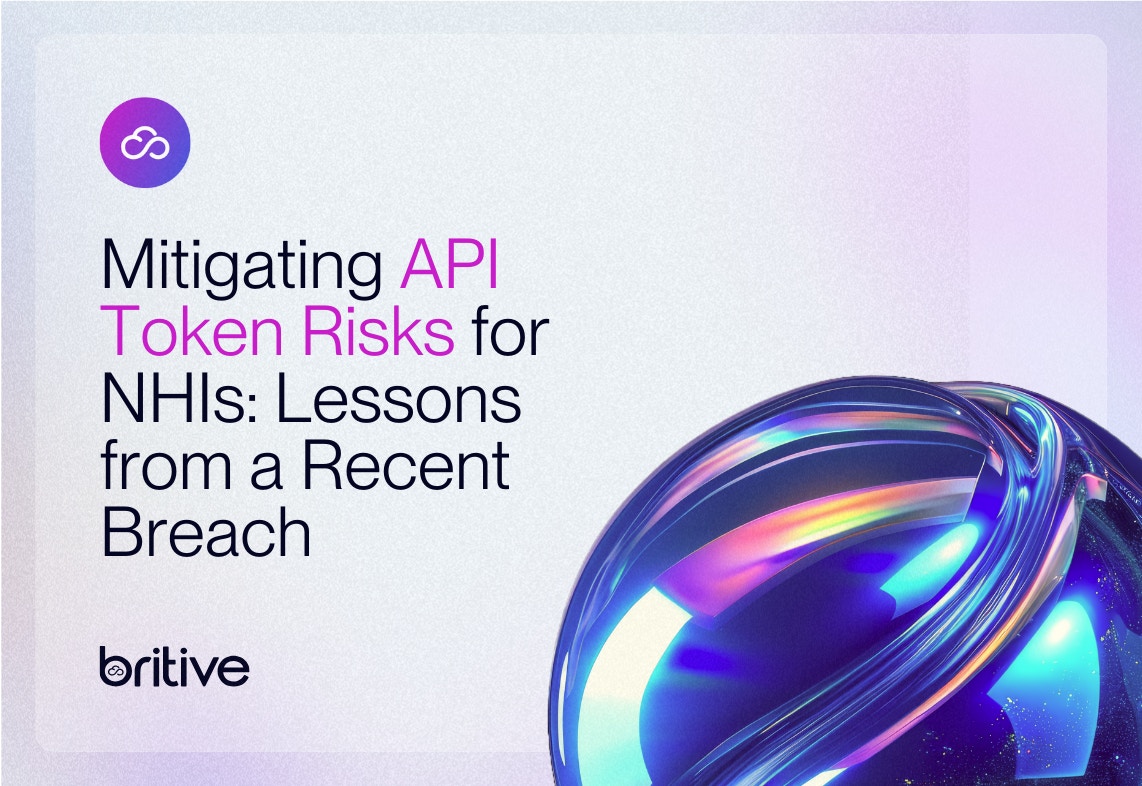


Back to resources
Navigating the Multi-Cloud Maze: Identity and Access Management for Financial Services
January 2025 / 5 min. read /

Organizations in the financial services industry face unique challenges in balancing innovation, security, and regulatory compliance. As companies increasingly adopt multi-cloud environments to meet business demands, managing identity and access across diverse platforms has become both critical and complex.
In a webinar with Chris Rasco, Chief Cloud Architect of Fiserv, he shared some invaluable insight around navigating their multi-cloud identity journey. From the evolution of internal tools to leveraging modern cloud-native solutions to ensure security, scalability, and agility.
Critical Challenges in Multi-Cloud Environments
Organizations in the financial services sector face unique challenges at the crossroads of adopting cloud technology to facilitate efficiency and innovation while maintaining stringent security and regulatory requirements.
Some of these challenges include:
Siloed Identity Structures Across Platforms
Each cloud infrastructure provider — AWS, Azure, GCP, and others — handles identity and access management differently. While AWS identities are constrained to individual accounts for example, Azure and GCP provide broader identity boundaries at the tenant or organizational level.
Disparate identity boundaries and tools make it difficult to achieve consistent policies and visibility across environments.
Operationally Burdensome Static Identity Models
Static IAM credentials are often the way that teams early in their cloud journey handle identities across teams. This approach quickly becomes unmanageable as the number of accounts and permissions grow across siloed identity systems, resulting in credential sprawl and access delays due to inefficiency and potential for error.
Increased Security Risks from Long-Lived Credentials
These long-lived credentials and over-provisioned access also amplify the potential for breaches as potential targets for attackers and a means for lateral movement across tools in the environment.
Without granular control or a unified view, managing identities becomes a significant security concern, as well as a large operational burden.
Rapid Growth of Non-Human Identities
Non-human identities (NHIs) such as service accounts, CI/CD pipelines, API integrations and other automations are crucial for working quickly in the cloud.
These NHIs have quickly outpaced the growth of human identities, resulting in an unwieldy number of identities and permissions that need to be managed and secured.
Regulatory Pressure and Audit Requirements
Meeting stringent compliance mandates like SOC 2, PCI DSS, and GDPR requires detailed access control, centralized management, and immutable logging. Across fragmented multi-cloud environments, logging, audit preparation, and compliance become time-consuming manual processes.
Effective Identity Management Strategy Features for Financial Services
To overcome these challenges, financial services organizations need to adopt innovative access management strategies that allow teams to embrace the speed and flexibility of the cloud without letting security fall by the wayside.
A modern access management tool should allow teams to prioritize principles of Zero Trust, automation, and scalability:
Centralized Permissions Management Across Complex Environments
A single platform should span across not only cloud infrastructures such as AWS, Azure, and GCP, but other software in the environment as well to ensure consistent security policy enforcement and reduce complexity.
Services run on virtual machines (VMs), Kubernetes clusters, and hybrid on-premises systems should also be managed by a single platform.
By utilizing a single source of truth for access controls, teams can simplify compliance and logging requirements while improving operational efficiency across all the company’s resources.
Transition to Zero Standing Privileges (ZSP) with Temporary Access
Eliminating static credentials and granting permissions only on a just-in-time (JIT), as-needed basis across all identities reduces the risk of credential exploitation.
Temporary, time-bound access ensures that no identity has more privileges than necessary at any given time. Having zero standing privileges goes beyond even the principle of least privileged access (LPA), ensuring that access exists only when it’s needed and automatically revoking it after a set period of time. This also paves the way for alignment with other Zero Trust (ZT) principles.
Unified Access Management Across Identities
A modern access management solution should extend an ephemeral access model across all identities, including APIs and service accounts. Dynamic permission adjustment based on workload attributes allows for additional security without disrupting the workflows and pipelines that depend on these automations.
Automation for Operational Efficiency
A platform capable of automating the provisioning and deprovisioning of access eliminates manual errors, reduces delays, and frees up IT teams to focus on higher-value activities.
Self-service workflows empower technical users to define and submit access profiles for review and approval, eliminating the back-and-forth across teams while maintaining adherence to security policies.
Build vs Buy: The Case for Modern Identity Solutions
Financial services organizations must evaluate whether to build in-house identity tools or adopt commercially available platforms. While internal tools can be tailored to specific needs, they often struggle to scale in multi-cloud environments.
Key takeaways from the multi-cloud identity journey shared in the webinar include:
Identity Management Complexity and Expertise
Identity management across multiple clouds is inherently complex. Commercial solutions provide access to experts in the identity space without requiring organizations to dedicate time and resources to building and maintaining their own in-house systems.
Scalability and Future-Readiness
While internal tools are effective initially, the growth of NHIs and other environmental requirements often outpaces the resources and expertise available.
Recognizing that cloud identity management isn’t a competitive advantage for the company, utilizing a commercial identity platform fulfills this need without extensive maintenance requirements.
Continuous Operational Efficiency
SaaS-based identity platforms reduce administrative burdens, ensuring continuous updates, compliance readiness, and 24/7 availability without taxing internal teams.
The Path Forward for Financial Services
As financial services organizations navigate the complexities of multi-cloud adoption, robust identity and access management strategies are non-negotiable. By unifying identity systems, adopting Zero Trust principles, and leveraging modern, scalable solutions, organizations can achieve the agility and security needed to thrive in today’s digital landscape.
Learn more about how Britive can help financial services organizations secure their multi-cloud environments. Ready to see Britive in action? Schedule a demo with a member of the team.

